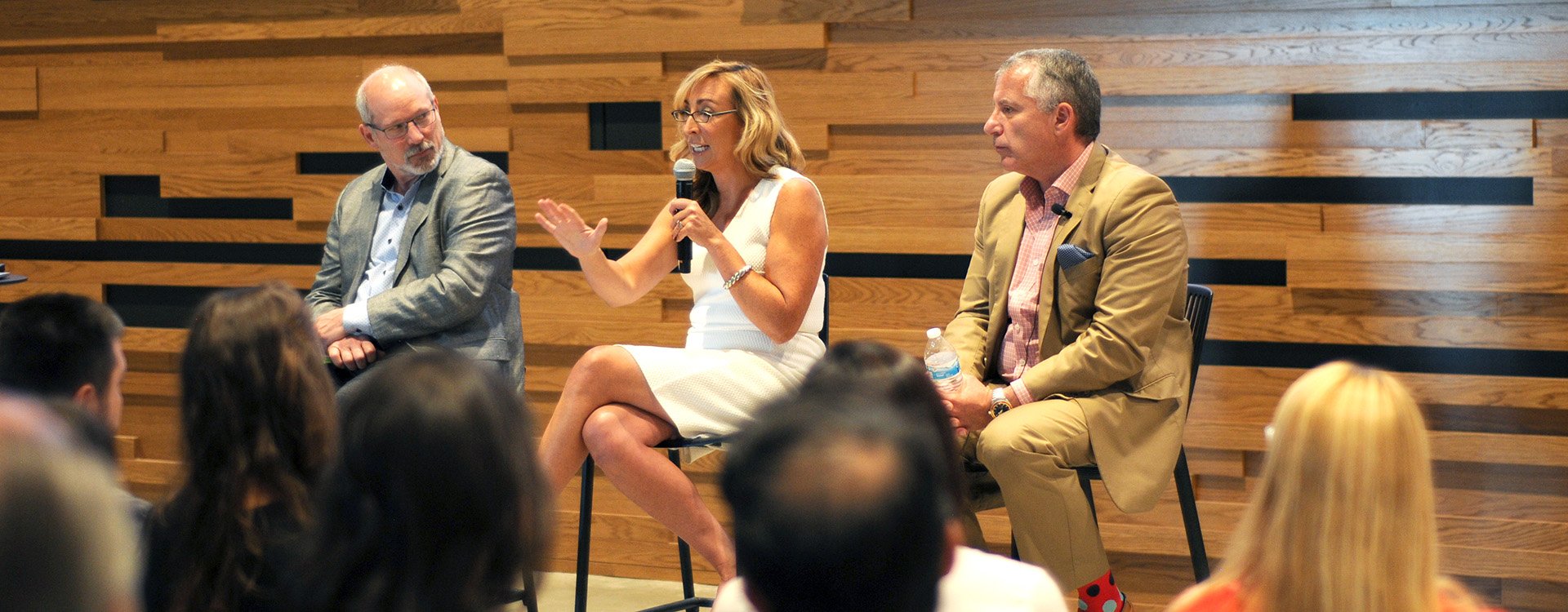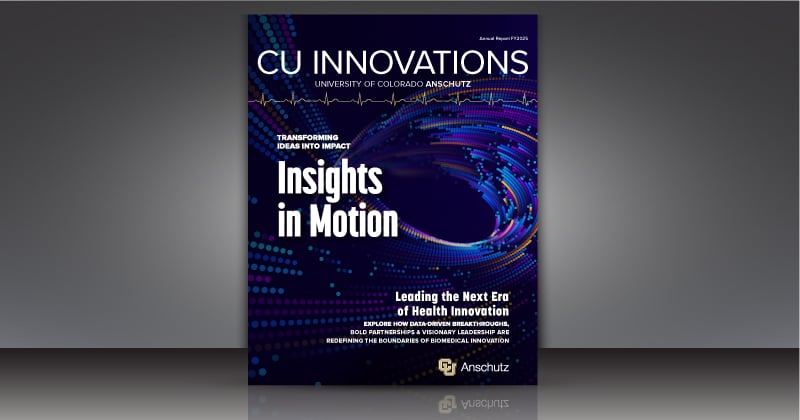No more waiting rooms. No more outdated, sticky magazines. No more trying not to touch anything as you wait to see a doctor.
What does the hospital of the future look like? The answer could be your own home, according to Richard Zane, MD, professor and chair of the Emergency Medicine Department at CU Anschutz, Chief Innovation Officer for UCHealth, and founder of CARE Innovation Center.
As part of Denver Start-Up Week, along with fellow panelists Kimberly Muller, executive director of CU Innovations, and Oliver Lignell, vice president of virtual health at AVIA, Zane built the case against modern healthcare in a panel titled, “The hospital of the future: digital technology revolutionizing healthcare.” Long waits, paralyzing expenses, staggering provider workload – while these weaknesses are undeniable, the fundamental flaw in our ailing healthcare system is just too much knowledge.
Dawn of the cognitive age
According to Zane, healthcare currently stands at the edge of a cognitive revolution, similar in magnitude to the trajectory of human history as the industrial revolution and the dotcom revolution. “Our machines can think and do things for us that we can’t do,” Zane said.

In 1982, Buckminster Fuller used a formula to predict how long it takes human knowledge to double. After World War II, knowledge doubled in about 20 years. In the ’80s, it doubled every 12 years. Currently, knowledge doubles every 12-14 months. In the future, with 50 smartphones per second being activated and more ‘things’ than people connected to the internet, Zane said that knowledge is soon predicted to double every 12-14 hours.
How can healthcare providers ever keep up? What human can ever know enough to practice medicine?
As an example, Zane asked the audience to consider how to treat a sore throat. Using PubMed, an academic search engine, Zane said there were over 17,000 scientific articles published in the last seven years. “I’m a medium-smart doctor,” he said, “and if I stayed up 24 hours a day, seven days a week, I couldn’t know everything there is to know about sore throats.”
I, robot
Healthcare providers are bombarded by information overload. Zane compared the problem to airline pilots: for the most part, computers fly the plane, and humans are occasionally brought in for complex decision-making. There are sensors everywhere in the cockpit, but the computers only bring in what the pilot needs to know to make an informed decision.
The brain’s capacity to integrate medical knowledge is similarly finite – Zane said humans can interpret only 1/1000 of the data in a medical record. Only one in five patients actually receives the correct treatment plan that complies with existing guidelines. “Whether you’re a doctor, nurse, patient, or executive, how do we help you make better decisions?” Zane asked. “Because we can’t know everything there is to know.”
“I see the world through the lens of a provider – there are either lions at the gate, or opportunity. I think it’s opportunity.” – Dr. Richard Zane
To guide better decision making, Zane described work with a company to embed guidelines within medical records as a flow chart-style interactive guide with auto-populated fields, including scheduling follow-up care. This resulted in treatment plans that matched guideline recommendations and patients who get better, faster.
Similar to using Google Maps and Waze for navigation, Zane asked, “What does it mean when the map turns red? It means that something is going on.” He pointed out that a similar flag could be raised for healthcare providers. Imagine you’re provided a free wearable device for a week before your appointment. Instead of just 12 minutes with you, your doctor can access the entire previous week’s information: Do you snore? Wake up seven times per night? Did your daily steps drop by 3,000 steps per day? These are all useful pieces of diagnostic information about you.
“I see the world through the lens of a provider – there are either lions at the gate, or opportunity. I think it's opportunity.”
Room for innovation
In healthcare, opportunities for innovation abound. Kim Muller, executive director at CU Innovations, said, “We’ve seen investment in healthcare at record levels. You see every major tech company entering the healthcare game. There’s clearly money to be made here, but companies also want to see the technology that could disrupt their business.”
Oliver Lignell, vice president of AVIA, a startup focused on digital change within healthcare systems, said there’s a lot of interest in virtual visits. He said, “Video visits have been around for a long time, but there haven’t been many updates, and these can require the same time investment as in-person visits. More convenient offline review and symptom checking with chatbots can provide more help to more people.”
According to Muller, losers in the oncoming cognitive revolution in healthcare are likely those not leading the edge of this transformation. “Healthcare cannot be the last bastion of technology, where implementing tech increases cost,” she said.
Zane highlighted pivotal moments in the history of healthcare: developing the first antibiotic, the smallpox vaccine, mapping the first human genome – and said modern healthcare is poised at a similar brink of revolution. “Now is the next big thing, and we’re all living it,” he said.
Guest contributor: Shawna Matthews, a CU Anschutz postdoc



